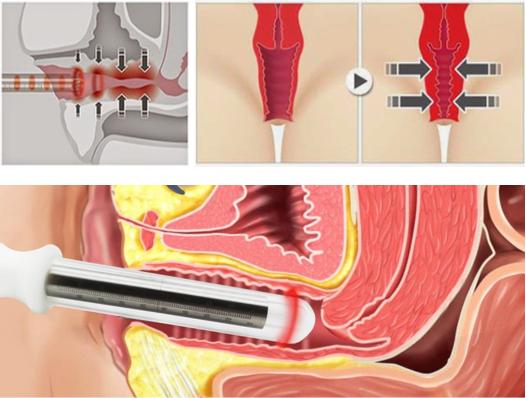The use of laser technology in gynaecology has become widespread from the early 1970’s by the introduction of CO2 lasers for the treatment of cervical erosions and other colposcopy applications. Since then, many advancements in laser technology have been made, and several other types of lasers are now available, including the latest semi conductor diode lasers.
At the same time, the laser has become a popular instru-ment in laparoscopy, especially in the area of infertility. Other areas like Vagine Rejuvenation and the treatment of sexually transmitted lesions renewed interest on lasers in the field of gynaecology.
Today, the trend to perform outpatient procedures and minimally invasive treatments lead to the development of very valuable applications in outpatient hysteroscopy using standard diagnostic instruments to resolve minor or more complicated conditions right in the office with the help of state of the art fiber optics.
What wavelength?
The 1470 nm/980nm wavelengths ensure high absorption in water and hemoglobin. The thermal penetration depth is significantly lower than, for example, the thermal penetration depth with Nd: YAG lasers. These effects enable safe and precise laser applications to be performed near sensitive structures while providing thermal protection of the surrounding tissue.Compared to the CO2 laser, these special wavelengths offer significantly better hemostasis and prevent major bleeding during surgery, even in hemorrhagic structures.
With thin, flexible glass fibers you have very good and precise control of the laser beam. The penetration of laser energy into deep structures is avoided and surrounding tissue is not affected. Working with quartz glass fibers in noncontact and contact offers tissue friendly cutting, coagulation and vaporization.
What is a LVR?
The LVR is a Vaginal Rejuvenation Laser Treatment. The Laser main implications include: to correct/improve stress urinary incontinence. Other symptoms to be treated include: vaginal dryness, burning, irritation, dryness and the sensation of pain and/or itching during sexual intercourse. In this treatment, a diode laser is used to emit an infrared light that penetrates the deeper tissues, without altering the superficial tissue. The treatment is non-ablative, therefore absolutely safe. The result is toned tissue and a thickening of the vaginal mucosa.
Post time: Jul-13-2022

